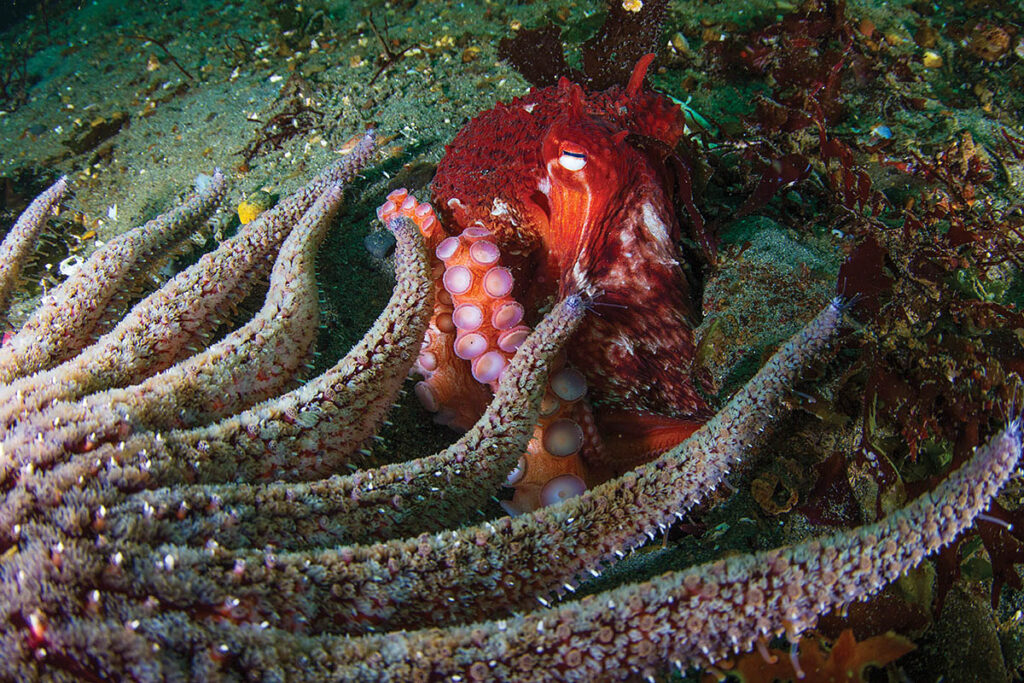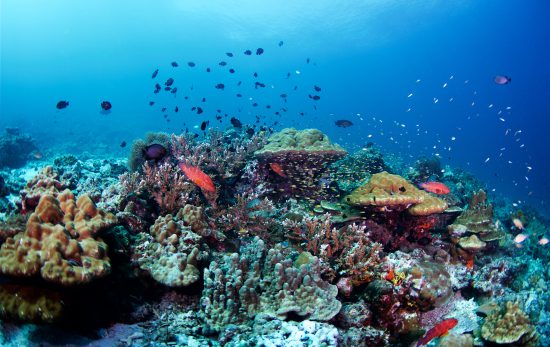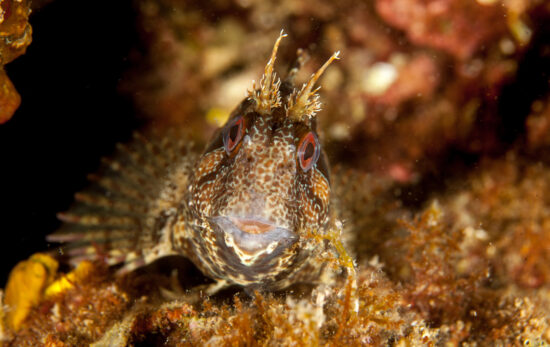Echinoderms are much more interesting than most people realize. Just because they’re common and slow-moving, it doesn’t make them boring. Some are savage predators despite the fact that they don’t have eyes or a brain.
Echinoderms include:
- Sea Stars
- Feather Stars and Sea Lilies
- Sea Urchins
- Brittle Stars and Basket Stars
- Sea Cucumbers
Echinoderms are also great subjects for aspiring underwater photographers because they can’t swim away. Wow your friends and family with a pic of a sunlit sea star, then blow their minds with a fun fact like: did you know sea stars can change their gender and regenerate body parts?
Who’s a boring bottom-dweller now?

How to Pronounce Echinoderm
In case you’re wondering. ‘echinoderm’ is pronounced, uh kai nuh derm. It sort of rhymes with “A sly, slow worm.”
These seemingly docile bottom dwellers are literally bloodless killers.
- Echinoderms don’t have blood. Instead, they have a water vascular system that circulates oxygen from their tube feet to their organs.
- Sea stars can pry open a mollusk, push their stomach through the crack in the mollusk’s shell and start digesting it by excreting digestive juices.
- Sea urchins have ruthlessly consumed nearly 95% of Northern California’s kelp forests (although we can’t really blame the urchins).
Echinoderms Hunt Without Eyes or a Brain
Echinoderms don’t have a head or a brain. Instead, they have a network of sensory organs that help them smell their way around the ocean.
Sea stars have a light-sensitive dot at the end of each arm called eyespots. They can sense whether they’re in a sunny vs. shadowy area, but they can’t see distinct images. It’s a bit like when you close your eyes you can tell if you’re in a bright room or one that’s completely dark.
Echinoderms are also remarkable because of something scientists call ‘radical symmetry’. Their bodies consist of five nearly identical sections (multiples of five in the case of feather stars) and each section has duplicate organs.
Watch the video below to see how the iconic five-armed shape of a sea star translates to its cousins the sea urchin and sea cucumber.
Regeneration is Their Superpower
Most people know if a sea star loses one or more arms, the appendage(s) will eventually grow back. What many don’t know is:
- Certain sea stars autonomously reproduce by deliberately shedding an arm.
- Some echinoderms, most notably sea urchins, will regenerate even after being cut in half.
Echinodermata Examples:
Who are the echinodermata in your neighborhood? Echinoderms only live in saltwater, but you’ll find them in every ocean. Here are some you may have encountered:
– Sea Stars
Sea stars thrive in every ocean, from the Arctic to the Antarctic. Most sea stars have five arms, but some have up to 50. Read more fun facts about sea stars (including why you shouldn’t call them starfish).
– Feather Stars
At first glance, feather stars look more like plants than animals. You may have seen them perched on a coral head, arms swaying with the current like tiny branches.
Feather stars can have up to 200 arms. Each arm is covered in mucus that captures and delivers food to the animal’s mouth, located in its central disc. They can also use their arms to swim, as seen in the video below.
– Crown of Thorns Starfish
The notorious Crown of Thorns Starfish (COTS) feeds on live coral and coral polyps. Though the animal is simply doing what nature designed it to do, COTS have caused significant damage to The Great Barrier Reef. Cyclone and coral bleaching events are also major contributors.
Under normal circumstances, Crown of Thorns Starfish do important work, eating fast-growing corals so slower-growing species can take hold and the reef is more diverse. But when a COTS population gets too large (more than 15 per hectare/2.5 acres), they can devour 90% of the living reef.

If you want to learn more about underwater ecosystems, ask your PADI® Instructor about the Coral Reef Conservation Specialty course (no dives required) or the Underwater Naturalist Specialty course (two dives).


